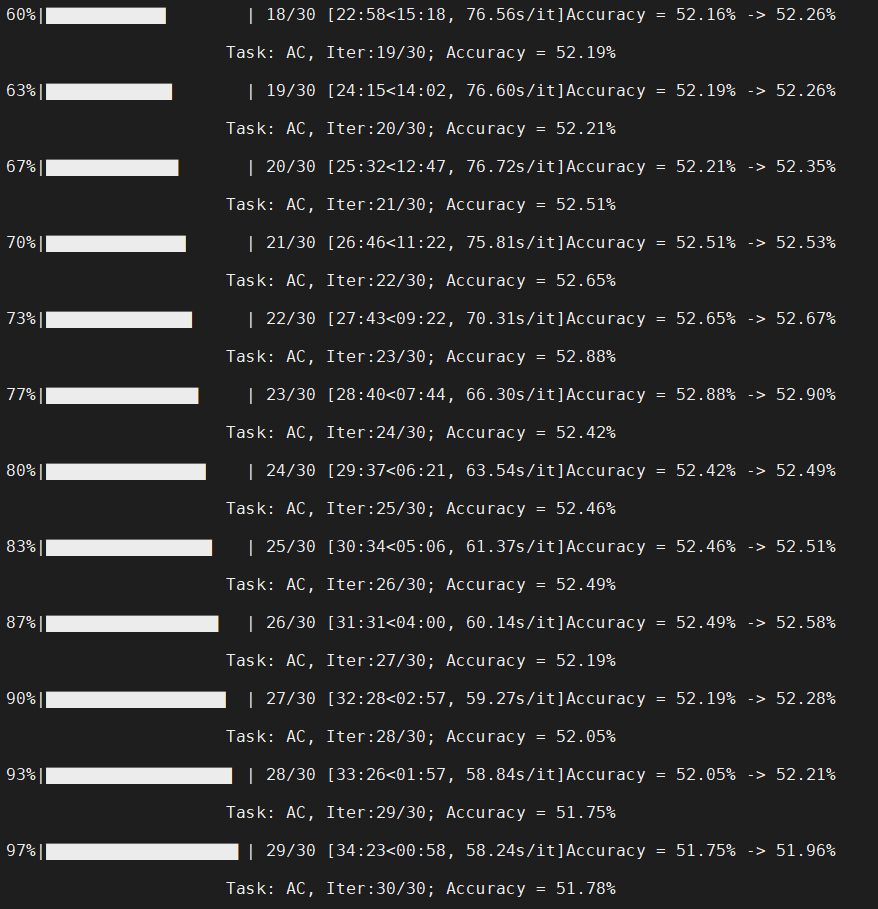When I rerun digital,
python uda_digit.py --dset u2m --gpu_id 1 --cls_par 0.1 --output ckps_digits;
The error happes as follow:
Traceback (most recent call last):
File "uda_digit.py", line 180, in train_source
inputs_source, labels_source = iter_source.next()
UnboundLocalError: local variable 'iter_source' referenced before assignment
During handling of the above exception, another exception occurred:
Traceback (most recent call last):
File "uda_digit.py", line 453, in
train_source(args)
File "uda_digit.py", line 183, in train_source
inputs_source, labels_source = iter_source.next()
File "/home/gyang/anaconda3/envs/pytorch/lib/python3.6/site-packages/torch/utils/data/dataloader.py", line 345, in next
data = self._next_data()
File "/home/gyang/anaconda3/envs/pytorch/lib/python3.6/site-packages/torch/utils/data/dataloader.py", line 856, in _next_data
return self._process_data(data)
File "/home/gyang/anaconda3/envs/pytorch/lib/python3.6/site-packages/torch/utils/data/dataloader.py", line 881, in _process_data
data.reraise()
File "/home/gyang/anaconda3/envs/pytorch/lib/python3.6/site-packages/torch/_utils.py", line 394, in reraise
raise self.exc_type(msg)
TypeError: Caught TypeError in DataLoader worker process 0.
Original Traceback (most recent call last):
File "uda_digit.py", line 180, in train_source
inputs_source, labels_source = iter_source.next()
UnboundLocalError: local variable 'iter_source' referenced before assignment
During handling of the above exception, another exception occurred:
Traceback (most recent call last):
File "/home/gyang/anaconda3/envs/pytorch/lib/python3.6/site-packages/torch/utils/data/_utils/worker.py", line 178, in _worker_loop
data = fetcher.fetch(index)
File "/home/gyang/anaconda3/envs/pytorch/lib/python3.6/site-packages/torch/utils/data/_utils/fetch.py", line 44, in fetch
data = [self.dataset[idx] for idx in possibly_batched_index]
File "/home/gyang/anaconda3/envs/pytorch/lib/python3.6/site-packages/torch/utils/data/_utils/fetch.py", line 44, in
data = [self.dataset[idx] for idx in possibly_batched_index]
File "/data2/gyang/DA-transformer-other/digit/data_load/usps.py", line 71, in getitem
img = self.transform(img)
File "/home/gyang/anaconda3/envs/pytorch/lib/python3.6/site-packages/torchvision/transforms/transforms.py", line 70, in call
img = t(img)
File "/home/gyang/anaconda3/envs/pytorch/lib/python3.6/site-packages/torchvision/transforms/transforms.py", line 1003, in call
return F.rotate(img, angle, self.resample, self.expand, self.center, self.fill)
File "/home/gyang/anaconda3/envs/pytorch/lib/python3.6/site-packages/torchvision/transforms/functional.py", line 729, in rotate
return img.rotate(angle, resample, expand, center, fillcolor=fill)
File "/home/gyang/anaconda3/envs/pytorch/lib/python3.6/site-packages/PIL/Image.py", line 2023, in rotate
return self.transform((w, h), AFFINE, matrix, resample, fillcolor=fillcolor)
File "/home/gyang/anaconda3/envs/pytorch/lib/python3.6/site-packages/PIL/Image.py", line 2337, in transform
im = new(self.mode, size, fillcolor)
File "/home/gyang/anaconda3/envs/pytorch/lib/python3.6/site-packages/PIL/Image.py", line 2544, in new
return im._new(core.fill(mode, size, color))
TypeError: function takes exactly 1 argument (3 given)




















